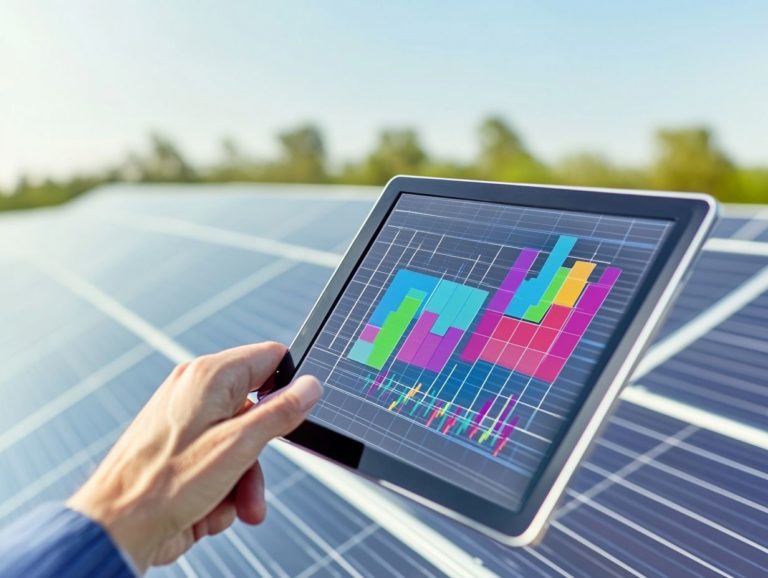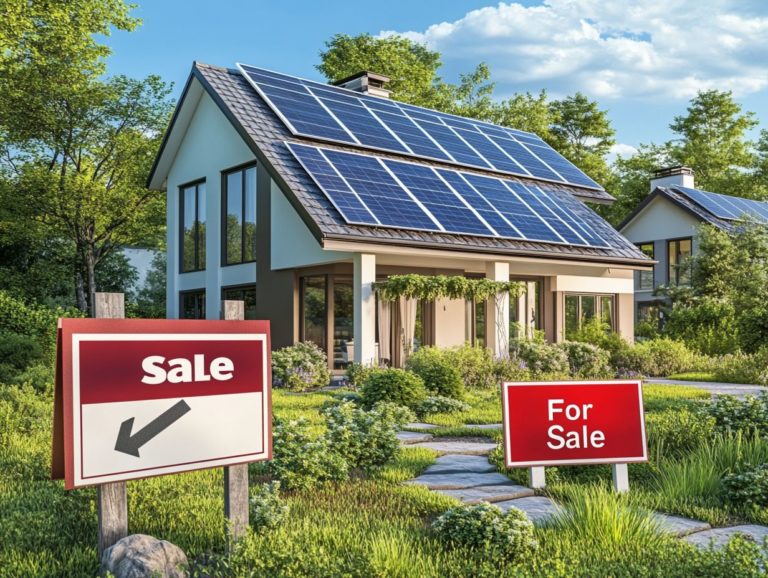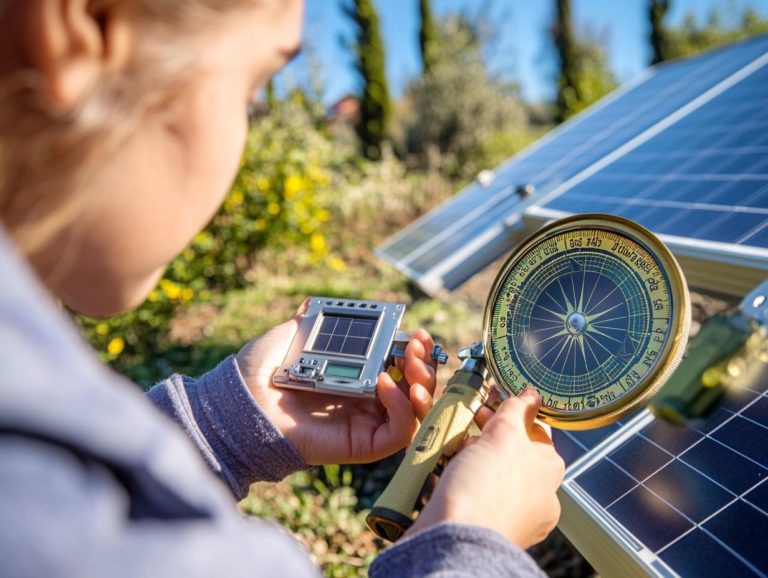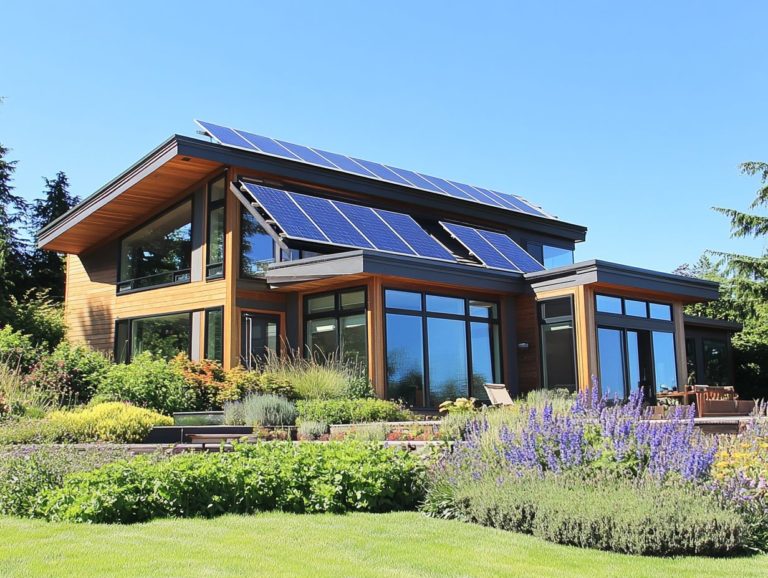“Setting Up a Solar Energy System: Key Steps”
Solar energy is swiftly becoming a favored sustainable alternative to traditional energy sources, delivering a wealth of environmental and financial advantages.
This article delves into the essence of solar energy, highlighting its benefits for both homeowners and the planet. You ll discover the key steps involved in establishing a solar energy system.
From evaluating your energy needs to navigating the installation process, this guide equips you with all the knowledge necessary to harness the sun s power effectively.
Contents
- Key Takeaways:
- Benefits of Using Solar Energy
- Key Steps for Setting Up a Solar Energy System
- Maintenance and Troubleshooting Tips
- Regular Maintenance and Common Issues
- Frequently Asked Questions
- What are the key steps for setting up a solar energy system?
- How do I determine my energy needs for a solar energy system?
- What factors should I consider when assessing my property for a solar energy system?
- How do I choose the right solar panels for my solar energy system?
- Do I need to obtain permits for setting up a solar energy system?
- How do I connect my solar energy system to the grid?
Key Takeaways:
Here are the main reasons to consider solar energy!
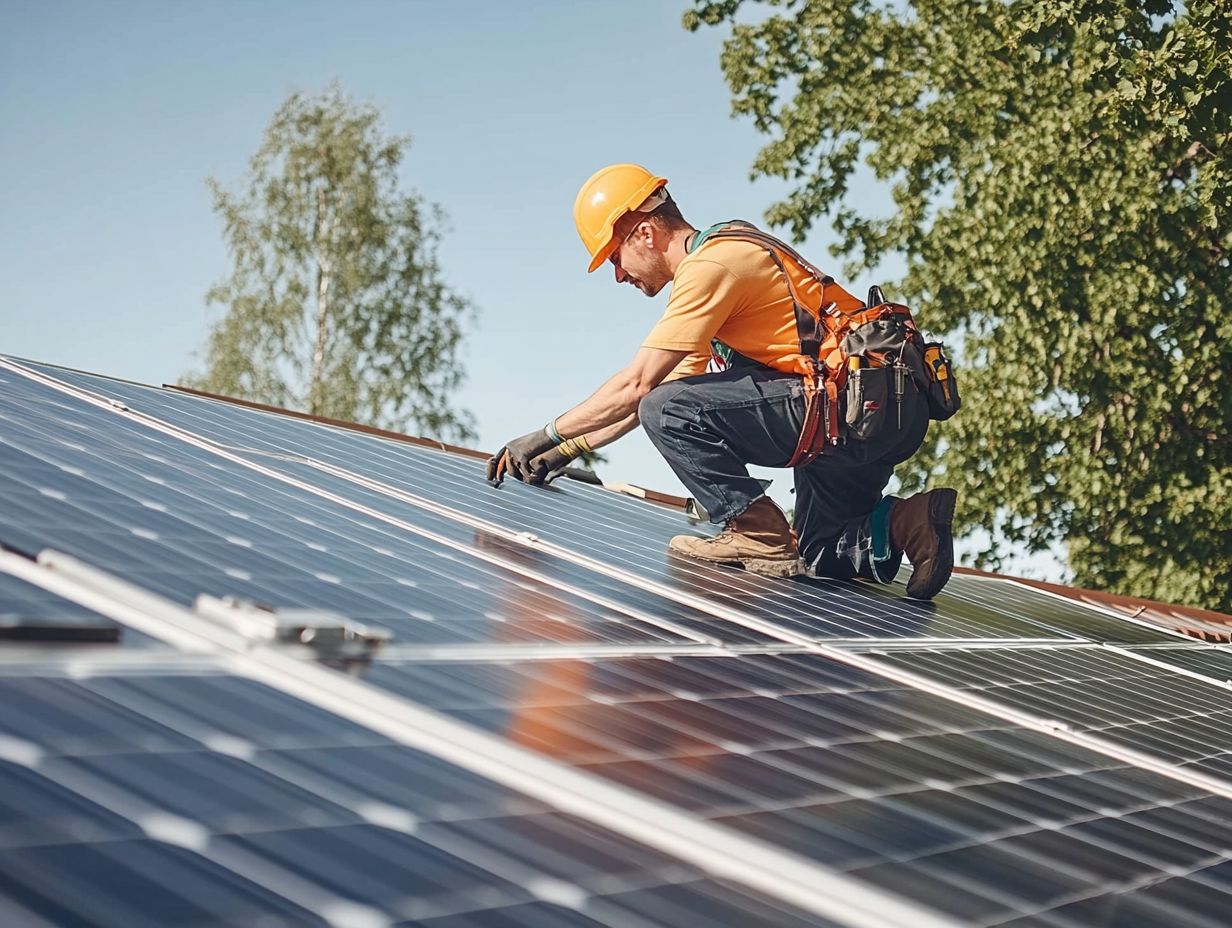
- Solar energy provides both environmental and financial benefits, making it a smart choice for homeowners.
- Assessing energy needs, choosing the right panels, and determining the best location are crucial steps in setting up a solar system.
- Proper installation and maintenance are key for a successful solar energy system, from obtaining permits to connecting to the grid.
What is Solar Energy?
Solar energy is your ticket to harnessing sunlight and transforming it into power, offering a clean energy source that benefits both you and the environment.
This renewable energy is produced through solar panels that convert sunlight into electricity, playing an essential role in creating a sustainable future.
At its core, the mechanism involves photovoltaic cells that capture photons from sunlight, generating direct current. Solar thermal technologies take a different route by using sunlight to heat water or air.
When you compare it to traditional energy sources like coal and natural gas, solar energy stands out by reducing greenhouse gas emissions while also lowering your electricity costs over time.
As technology progresses, the efficiency of solar panels keeps improving, making it an increasingly attractive option for everything from residential heating to powering businesses and even supporting electric vehicles.
This versatility ensures that solar energy remains a key player in the global shift toward sustainable living.
Benefits of Using Solar Energy
The advantages of harnessing solar energy go well beyond merely slashing your electricity bills. They include substantial energy savings, a favorable impact on the environment, and appealing financial incentives.
Solar power is closely linked to energy-efficient homes and plays a vital role in fostering a sustainable future while reducing reliance on fossil fuels.
Environmental and Financial Advantages
The environmental and financial benefits of solar energy are truly remarkable. Using this renewable resource allows you to significantly lower your carbon footprint while enjoying various financial incentives, such as solar tax credits.
By making the switch, you can experience substantial energy savings and actively promote a cleaner, more sustainable environment. These innovative systems not only reduce greenhouse gas emissions but also enhance your energy independence.
Take full advantage of federal tax credits that offset a considerable portion of your installation costs, alongside local rebates that further decrease your expenses.
As more individuals transition to solar power, a ripple effect begins to form, inspiring others to explore similar eco-friendly alternatives. This collective movement helps combat climate change and stimulates economic growth within the renewable energy sector.
Choose solar energy today for lasting savings and a healthier planet!
Key Steps for Setting Up a Solar Energy System
Setting up a solar energy system includes a few important steps, beginning with a thorough assessment of your energy needs and culminating in the selection of a qualified professional installer.
Each step is important in shaping both the installation process and the overall project timeline. It s imperative to partner with reputable solar companies to guarantee a smooth transition to renewable energy, ensuring that you make the most informed decisions for your energy future.
1. Assessing Your Energy Needs
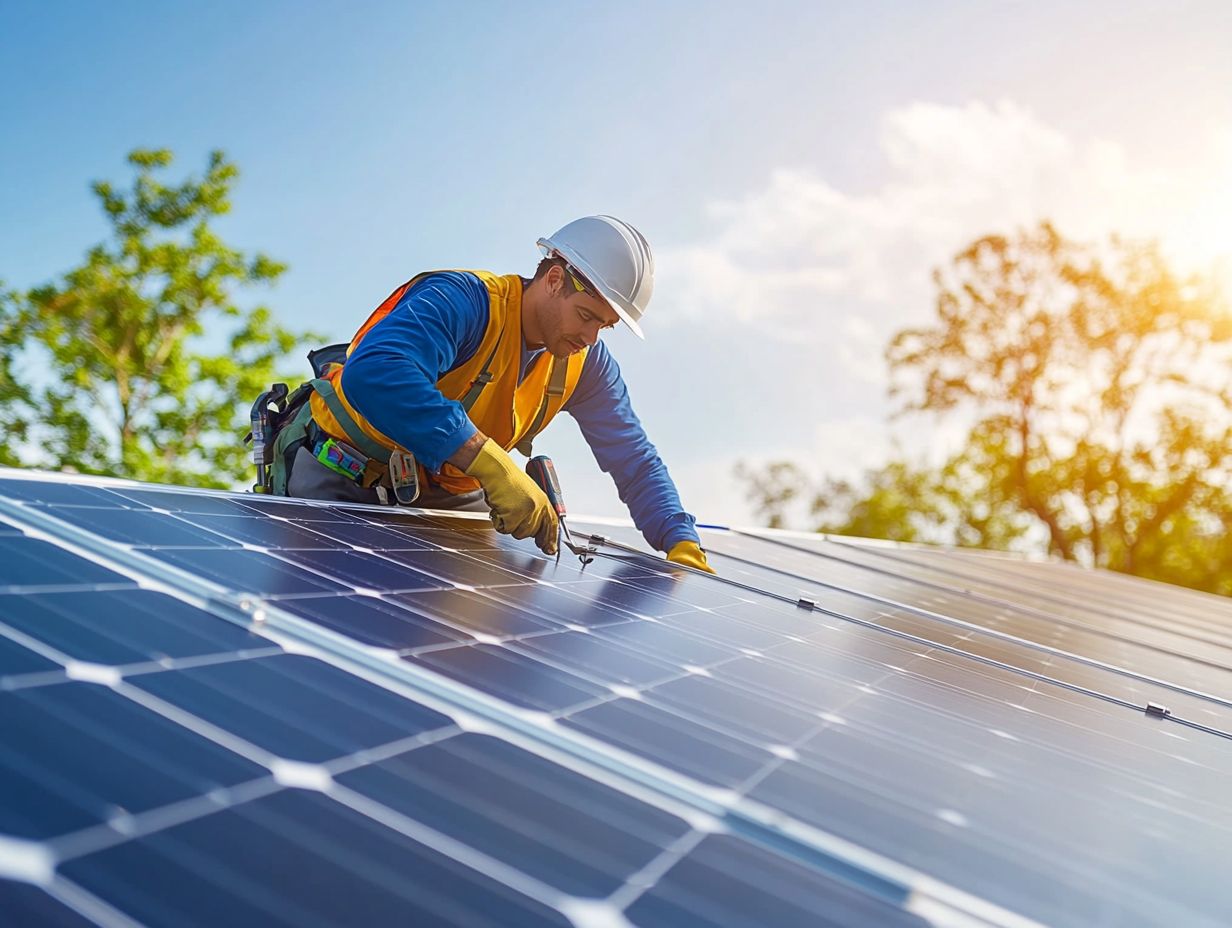
Assessing your energy needs is the crucial first step in setting up a solar energy system. This involves a thorough energy audit to evaluate your consumption patterns.
Start by gathering data such as your monthly utility bills. They reveal your usage rates and peak consumption times.
Catalog your major appliances along with their energy ratings. This will provide valuable insights into your daily energy consumption.
Understanding these details allows you to determine the size of the solar system you need. This assessment also helps identify energy-saving measures, reducing costs and improving efficiency.
2. Choosing the Right Solar Panels
Choosing the right solar panels is essential for optimizing your energy output. Their efficiency should align with your energy needs.
Consider various factors, including types, performance metrics, and costs.
The most common types are:
- Monocrystalline panels are highly efficient and long-lasting, ideal for limited space.
- Polycrystalline panels are slightly less efficient but budget-friendly.
- Thin-film panels are lightweight and flexible, but typically require more space for installation.
Evaluate your roof space and energy consumption before making a decision. These factors greatly influence your system’s performance.
3. Determining the Best Location for Panels
Finding the ideal location for your solar panels is crucial. You need to assess available roof space, shading, and roof orientation.
A south-facing roof captures the most sunlight. Good evaluation can greatly impact your energy production levels.
If you have ample roof space, you can install more panels to maximize energy potential. However, shadows from trees or buildings can reduce efficiency.
Consider local weather patterns and seasonal changes. Consistent sunlight directly influences energy yield.
4. Selecting an Inverter and Battery Storage
Choosing the right inverter and battery storage is vital for maximizing production. Inverters convert the DC electricity from panels into AC electricity for your home.
Battery systems store excess energy for later use. Understanding inverter types like string inverters or microinverters helps tailor your system.
String inverters are budget-friendly and work well for unshaded systems. Microinverters optimize output in shaded areas.
For battery storage, options range from lead-acid to lithium-ion, each with benefits regarding lifespan and efficiency. Evaluate your energy patterns to find the best combination for peak efficiency.
5. Obtaining Necessary Permits and Approvals
Obtaining necessary permits and approvals is crucial for your solar installation journey. This ensures compliance with local regulations and agreements with your utility company.
These permits cover important areas like structural integrity, electrical safety, and zoning regulations. Local authorities review applications to ensure your installation meets all safety and building codes.
Agreements for connecting to the grid are vital. They outline how excess energy will be credited to your utility account.
Working with experienced solar companies helps you navigate these complexities. Their expertise secures approvals and manages negotiations with local agencies.
6. Installation Process
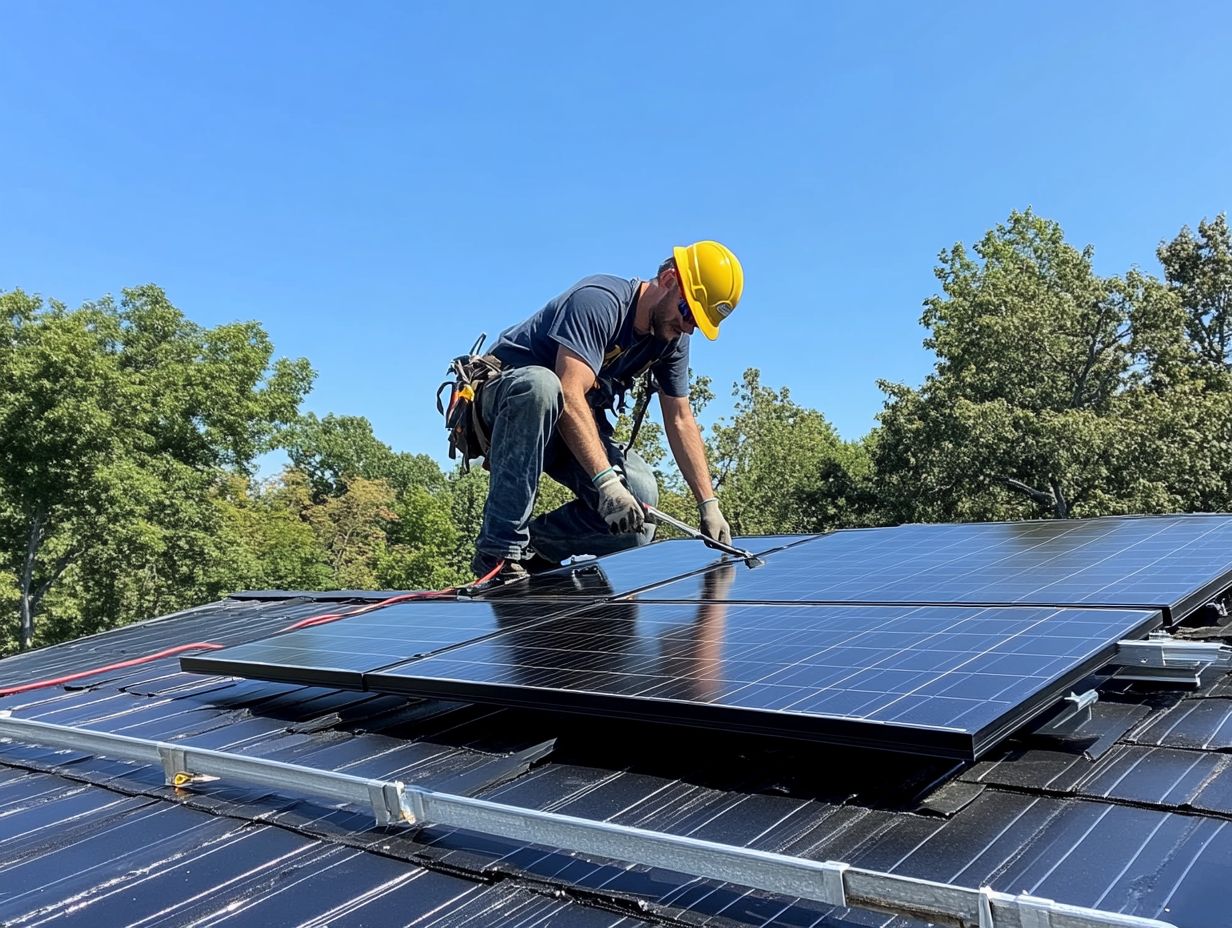
The installation process for solar energy systems involves precise steps executed by professional installers. They follow specific system specifications to ensure optimal performance.
The journey starts with site preparation. Installers assess the location to confirm its suitability for solar energy.
Next, they determine the best panel positioning, considering sun exposure and potential shading. Then, they install the mounting systems and panels, followed by electrical connections for efficient energy transmission.
Final connections to the electrical grid are critical for compliance and safety. Inspections are also necessary to ensure everything meets local regulations.
Hiring a professional installer enhances the system’s overall functionality. Their expertise maximizes your return on investment while giving you peace of mind.
7. Connecting to the Grid
Connecting your solar energy system to the grid is vital. It allows you to use the energy you produce and send excess energy back to the utility company.
This process involves working closely with your local utility company to follow regulations. By establishing this connection, you benefit from net metering, which credits you for surplus energy.
These energy credits can significantly reduce your electric bills. The initial investment in solar becomes much more appealing.
Cooperating with local utility companies ensures a smooth integration process. This not only boosts your energy efficiency but also inspires others to adopt renewable solutions.
Maintenance and Troubleshooting Tips
Regular maintenance is essential for your solar energy system’s performance. This helps you identify issues quickly and keeps every component operating effectively.
Incorporating a solar monitoring system enhances your maintenance efforts. It ensures your investment continues to deliver great results.
Regular Maintenance and Common Issues
Regular maintenance checks are crucial for identifying common issues in your solar energy system, safeguarding its performance and longevity. By utilizing advanced solar monitoring technologies, you can detect problems before they escalate, ensuring consistent energy production.
These maintenance checks involve:
- Inspecting for debris accumulation on the panels,
- Assessing how well the system converts sunlight into usable energy,
- Verifying the integrity of electrical connections.
Common issues, such as shading from overgrown vegetation or dust build-up, can significantly hinder efficiency. Monitoring systems alert you to malfunctions or drops in performance, allowing for timely interventions.
By consistently reviewing the data and trends from your monitoring solutions, you can implement proactive strategies to address potential issues. This effectively prolongs the life of your system and optimizes your investment.
These practices supercharge your energy generation and keep it running smoothly year-round, enhancing both performance and your peace of mind.
Frequently Asked Questions
What are the key steps for setting up a solar energy system?
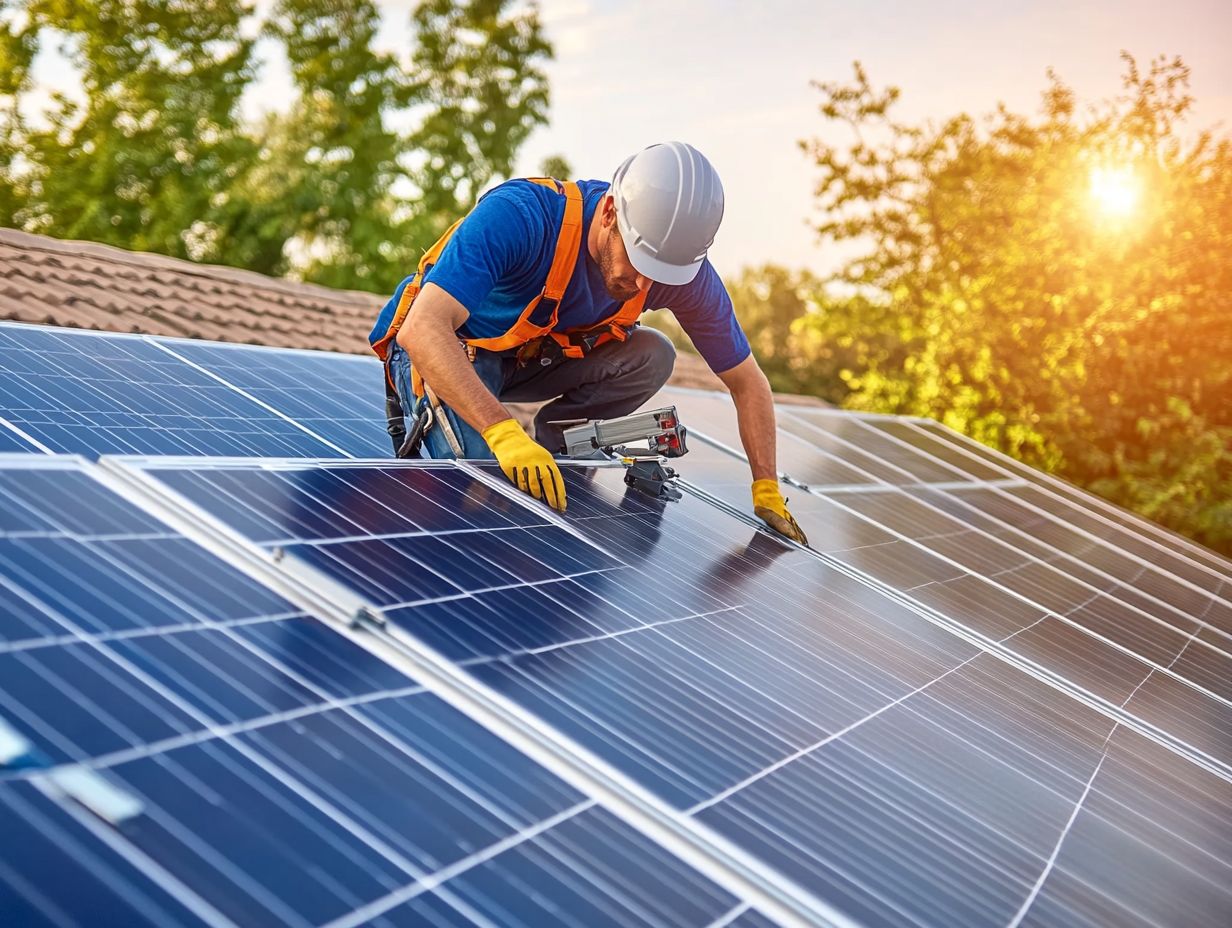
The key steps for setting up a solar energy system include determining your energy needs, assessing your property, choosing the right solar panels, selecting a suitable location, obtaining necessary permits, and connecting to the grid.
How do I determine my energy needs for a solar energy system?
You can determine your energy needs by reviewing your past electricity bills and calculating your average daily energy usage. This will help you figure out the size and number of solar panels required to meet those needs.
What factors should I consider when assessing my property for a solar energy system?
When assessing your property, you should consider the available installation space, the orientation and tilt of your roof, shading from nearby trees or buildings, and the condition of your roof.
How do I choose the right solar panels for my solar energy system?
When selecting solar panels, consider their size, efficiency, and durability. It’s also important to choose a reputable brand with a good warranty and certifications from recognized organizations.
Do I need to obtain permits for setting up a solar energy system?
Yes, you will need to obtain permits from your local government or utility company before installing a solar energy system. This ensures that your system meets safety and building codes and is approved for grid connection.
How do I connect my solar energy system to the grid?
To connect your solar energy system to the grid, you’ll need to work with a licensed electrician who will install a bi-directional meter and connect your system to your existing electrical panel. This allows you to both use and sell excess energy back to the grid.
Ready to install solar? Contact us today!

